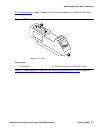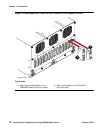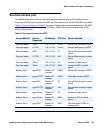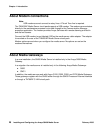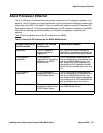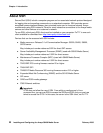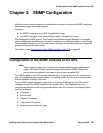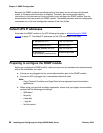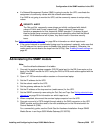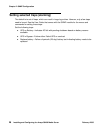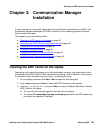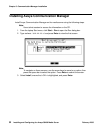
Configuration of the SNMP modules in the UPS
Installing and Configuring the Avaya S8400 Media Server February 2006
25
Chapter 2: SNMP Configuration
After the control network equipment is installed and connected, configure the SNMP modules to
send alarms (traps) to the media servers.
Configure:
● the SNMP modules in each UPS (if supplied by Avaya)
● the SNMP Subagent in the Avaya Ethernet switch (if supplied by Avaya)
First configure the SNMP agents. Then install Avaya Communication Manager on the media
server, configure the media server, and verify its operation. In a duplicated system, install Avaya
Communication Manger on the first media server and verify its operation before you repeat the
process on the second media server.
This section covers Configuration of the SNMP modules in the UPS
on page 25
Configuration of the SNMP modules in the UPS
Note:
Note: These instruction apply only if using a new, Avaya-supplied uninterruptible power
supply (UPS) with a simple network management protocol (SNMP) module. Do
not use these procedures to set traps on a non-Avaya-supplied UPS.
The SNMP module in the UPS must be administered so it reports alarms to the media server
when the hardware experiences problems. The module reports the loss of commercial power
and the depletion of battery resources.
For the SNMP module to properly report alarms, a unique IP address for the UPS must be
configured on both the SNMP module and the media server. This IP address can be a
customer-provided one or the Avaya-provided default one. At a minimum, the following items
must be configured:
● IP address
● Subnet mask
● Gateway IP address
● Trap receiver IP address
● Community string (get, set, trap)



